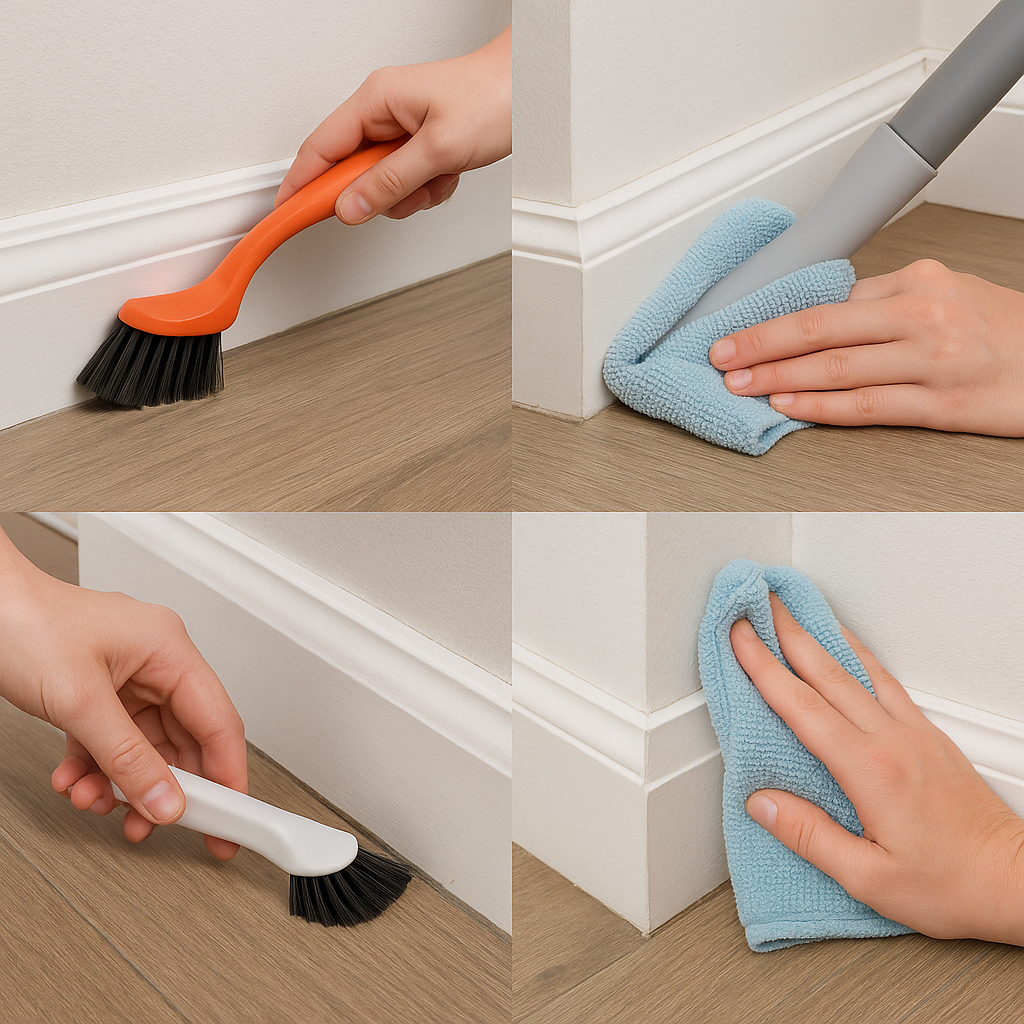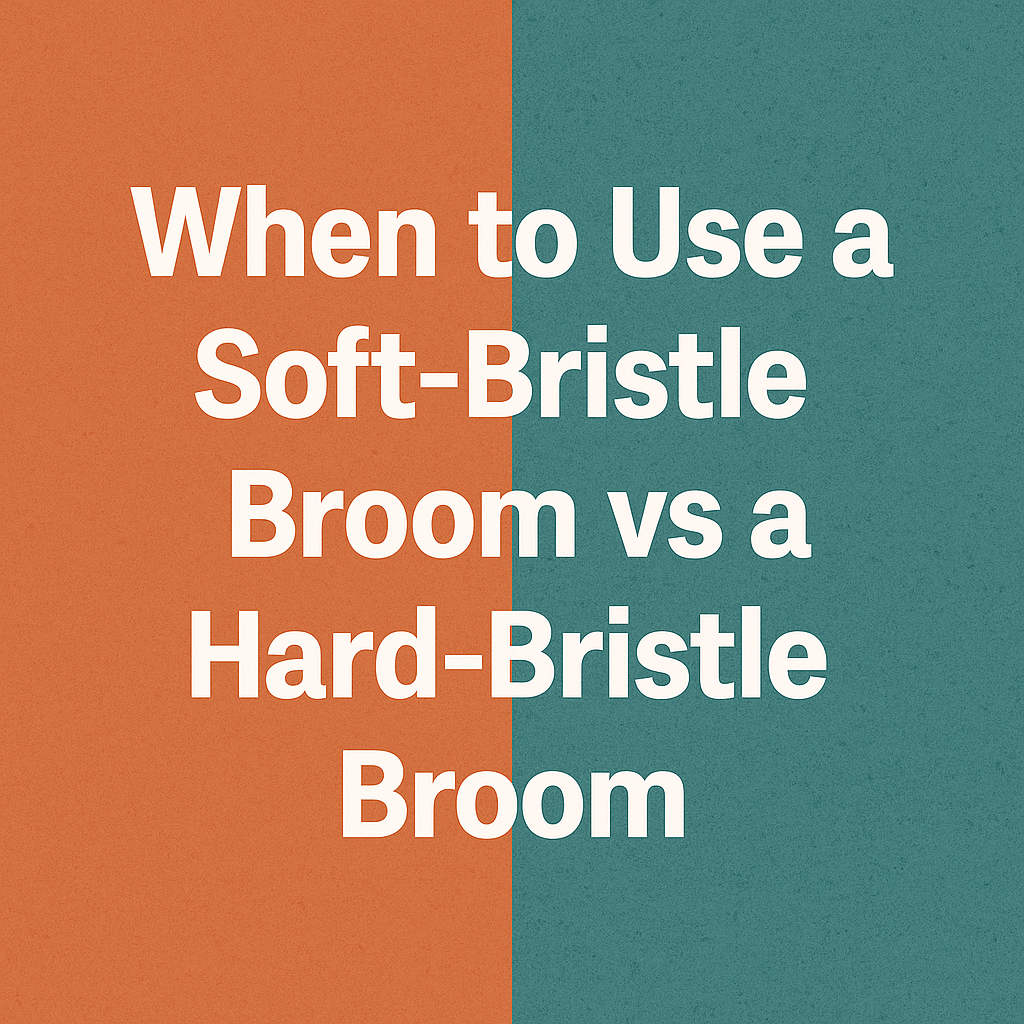Cleaning corners, edges, and skirtings can be frustrating. Dust and grime love to hide in these tight spaces, and standard methods often miss them. But with the right cleaning tools, you can make these areas look as tidy as the rest of your home. Whether you're using small brushes, microfiber cloths, or angled vacuum attachments, having the best home cleaning equipments on hand makes the job easier and more effective.
You don’t need expensive gear. Simple, affordable tools made for narrow spaces usually work best. Knowing which ones to use can save you time and effort in your regular cleaning routine.
This guide will walk you through the most useful options to keep your corners and edges clean without much hassle.
Essential Cleaning Tools for Corners, Edges, and Skirtings
To clean tight spaces effectively, you need tools designed to fit into small areas without damaging nearby surfaces. Selecting the right brushes, scrubbers, cloths, and wipes helps you clean more thoroughly and quickly.
Choosing the Right Brushes and Scrubbers
Pick small brushes with angled or tapered bristles. These are shaped to reach into corners and along edges. Nylon bristles are ideal because they are strong enough to clean dirt but soft enough to protect your surfaces.
Even a toothbrush or detailing brush works well for cleaning dirt from skirting board grooves. For longer edges, use a flexible scrubber that adjusts to different shapes.
Avoid metal brushes unless you're working on very durable surfaces. Soft bristles are better for painted or delicate areas.
Selecting Cloths and Wipes for Tight Spaces
Microfiber cloths are perfect for cleaning edges and skirting boards. Their tiny fibers grab onto dust rather than spreading it around.
Choose smaller cloths or fold a larger one to fit narrow gaps. You can also dampen the cloth slightly to lift off more grime without leaving streaks.
For delicate surfaces, use lint-free and non-abrasive cloths. While disposable wipes are convenient for quick jobs, microfiber cloths are better for deep cleaning and long-term use.
Step-by-Step Techniques for Effective Cleaning
Proper technique helps you clean hard-to-reach areas thoroughly without damaging walls, floors, or trim. These simple steps make a big difference in the result.
Dust Removal from Skirtings and Baseboards
Start with a dry microfiber cloth or a dusting brush to wipe off surface dust. Move slowly to catch everything and prevent pushing dust into deeper corners.
For stuck dust, use a vacuum cleaner with a soft brush head to pull out particles lodged in grooves.
After dusting, wipe the area with a damp cloth and mild detergent. Dry it with a clean towel to avoid water marks or surface damage.
Deep Cleaning Corners and Edges
Use a small brush or old toothbrush dipped in soapy water. Scrub gently to remove built-up dirt and residue in tight corners.
Be careful not to apply too much pressure, especially on painted areas. Once clean, wipe away leftover soap with a damp cloth and dry the area fully.
This method helps prevent mold or mildew from forming in hidden spots.
Preventing Dirt Buildup in Hard-to-Reach Areas
A quick dusting each week helps stop dirt from building up. Staying consistent saves you time in the long run.
Use a slim vacuum nozzle to suck up dirt from tight edges and corners. It’s an easy way to avoid needing frequent deep cleans.
You can also apply a protective polish to wooden skirting boards. This keeps dust from sticking and makes future cleaning quicker.
Advanced Tips for Maintaining Spotless Results
To keep your home looking great, it’s important to choose safe products and use proper cleaning techniques. A little extra care can make a big difference over time.
Choosing Safe and Suitable Cleaning Solutions
Pick cleaners that are gentle but still effective. Harsh products like bleach or ammonia can ruin paint and wood finishes.
Choose cleaners labeled safe for wood or non-abrasive. A homemade solution of warm water and dish soap works well in most cases.
Test any new cleaner on a small hidden area first. Apply with a microfiber cloth or soft sponge to avoid scratches.
Avoid strong acids or high-pH products, as they can damage finishes and dull surfaces.
Protecting Surfaces from Damage
Use light pressure while cleaning, especially around delicate edges and corners. Too much force can remove paint or cause dents.
Make sure brushes and cloths are clean before using them. Dirt caught in bristles can leave scratches behind.
You can wrap a cloth around a stick or use padded cleaning tools to reach tight spots without damaging anything. Stay away from stiff bristles unless you're sure the surface can handle it.
Inspect your skirting boards and corners regularly. Small cracks or chips can be repaired easily if caught early.









